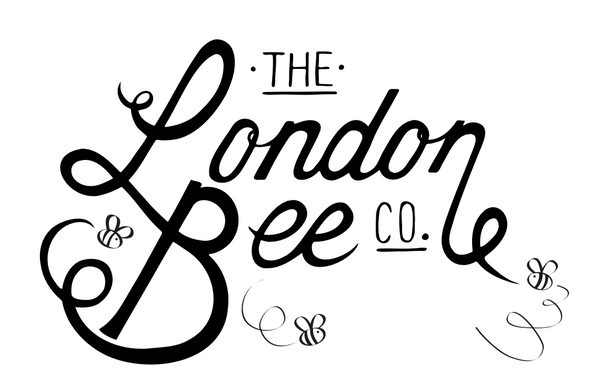Propolis - The Immunity Booster
•Posted on March 14 2020

What is Propolis?
Propolis is a resinous substance composed to tree resins, balsams, essential oils, terpenes, beeswax and a range of other natural compounds. Scientists have found that it actually contains over 300 natural compounds, including amino acids, coumarins, phenolic aldehydes, polyphenols, sequiterpene quinines and steroids.
In general, raw propolis is made up of approximately 50 percent resins, 30 percent waxes, 10 percent essential oils, 5 percent pollen and 5 percent of various organic compounds such as phenolic acids and flavonoids . Several vitamins, enzymes and minerals can also be found within propolis.
What do bees do with propolis?
Propolis has a number of functions within the hive.
1. Placed at the entrance of the hive, bees use its antimicrobial properties to disinfect the base of their legs, keeping harmful microbes out.
2.Often referred to as 'bee glue' honeybees will use this resinous compound to waterproof and seal gaps in the beehive.
3. An antiseptic - bees will use the propolis to sterilise honeycomb and prepare a sterile place for their queen to lay her eggs. It also acts as a barrier between the bees and and and surface within the colony the bees have needed to clean and sterilise. In effect it is a natural antibiotic for them.
4. Embalming - Bees will kill parasites and pests that have entered the hive and remove them from the colony. However, it is often the case that the pests are too large for the bees to remove. By coating the dead pests with propolis, the bees will prevent the decomposition of those pests and thus protecting the colony from potential health risks.
A brief history of propolis through the ages
Propolis has been used by humans throughout the centuries. A brief history as follows:
Ancient Egyptians used propolis as an “embalming” substance as well as for its soothing and healing properties
Roman soldiers carried propolis to war to heal wounds or use as a morale-building tonic
In 1600 Propolis was listed as an official drug in the London Pharmacopoeias.
In the first and second world wars, propolis was used by the Soviet Union in first aid to reduce wound infection and speed healing. It was nicknamed “Russian Penicillin”
In 1973 Dr. Karl Lund Aagaard, a Danish biologist, earned the name “Dr. Propolis” for studies on 50,000 Scandinavian patients proving the effectiveness of propolis in treatment as well as the fact it produces almost no side effects.
Propolis has many beneficial properties, such as the ability to reduce sensations of pain, fight against viruses and help the regeneration of damaged tissue.
As a result, it is used in many commercially available cosmetic and medicinal products, such as ointments and creams, nasal sprays, throat lozenges, and toothpaste.
How can we use it to boost our Immunity?
It can be used both internally and externally, and is believed to kill bacteria, viruses, and fungi. It also possess local anaesthetic, anti-ulcer, and anti-inflammatory properties, while stimulating the immune system.
Commonly used in oral and dental preparations, propolis may have a role in reducing tooth decay and oral ulcers and in promoting the health of injured teeth. Recent research has shown that propolis seems to be able to protect the eyes from the formation of cataracts*
Cytotoxicity of propolis and its chemical constituents has been demonstrated to stop the growth of tumours in animals and tumour cells and some of its advocates use it as protection, they claim, against prostate and bowel cancer.
Caffeic Acid Phenethyl Esteror or CAPE seems to be the effective compound. Scientists recently investigated whether CAPE could halt or reverse osteolytic bone disease. They found that this compound in propolis was very effective at suppressing the inflammatory compounds that cause these bone diseases and even suggested propolis might be a potential treatment for bone wasting diseases such as osteoporosis. In addition it is been found to normalise sugar balance in animals with type II diabetes**
Preparing Propolis Extract
Raw propolis is extremely difficult for our digestive system to process. As a result, it is necessary to process the propolis to create a bioavailable extract which can then be used in preparations. This process takes approximately 5 weeks in the lab and creates a high potency extract.
Propolis Suspension
At The London Bee Company, we have created an easy to use propolis suspension using high a strength extract created from the propolis collected from our own British hives (we do not use any imported propolis which is often highly adulterated with unknown bulking agents and is of low efficacy).
Find our Propolis Suspension Here
*T. Shibata, S. Shibata, et al: Propolis, a Constituent of Honey, Inhibits the Development of Sugar Cataracts and High-Glucose-Induced Reactive Oxygen Species in Rat Lenses, Journal of Ophthalmology, April, 2016
**1. M. T. Al-Hariri, Propolis and its direct and indirect hypoglycemic effect, Journal of Family and Community Medicine, 2011.
2. T. Matsui, S. Ebuchi, et al., Strong antihyperglycemic effects of water-soluble fraction of Brazilian propolis and its bioactive constituent, 3,4,5-tri-O-caffeoylquinic acid, Biological and Pharmaceutical Bulletin, 2004
More Posts
-
The Beauty of Honey...
Ever wonder what we do with our honeycomb? this is a little information of how we process all that leftover beautiful honeycomb
Read More -
The Art of Beeswax ...
Step into the world of BEESWAX CANDLESTICK making, where you’ll not only craft exquisite, eco-friendly candles but also unlock the secrets of beesw...
Read More



